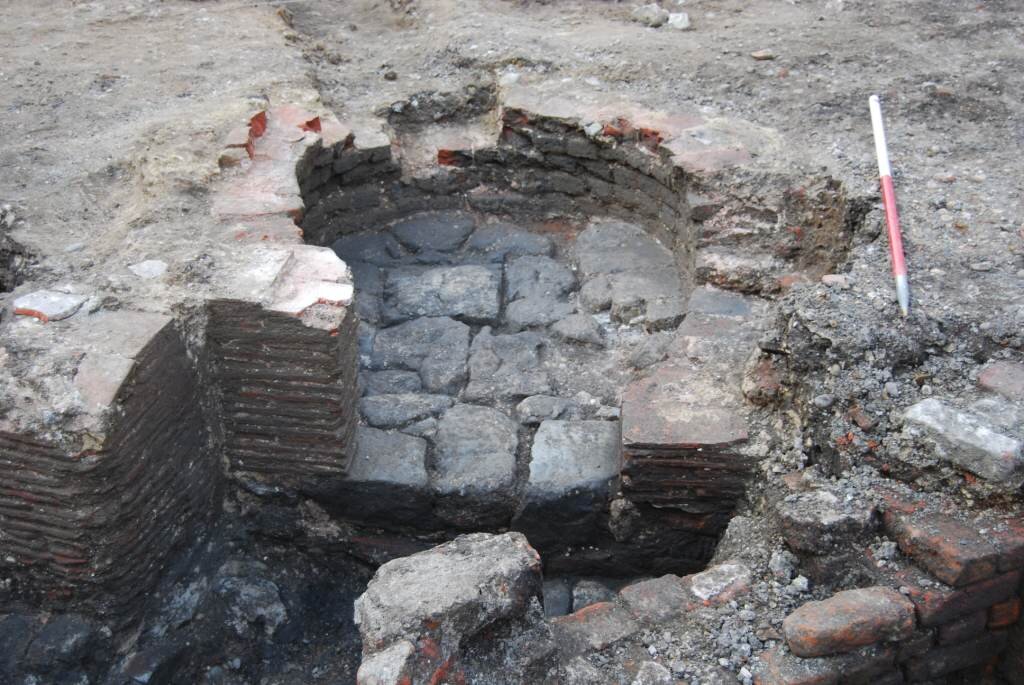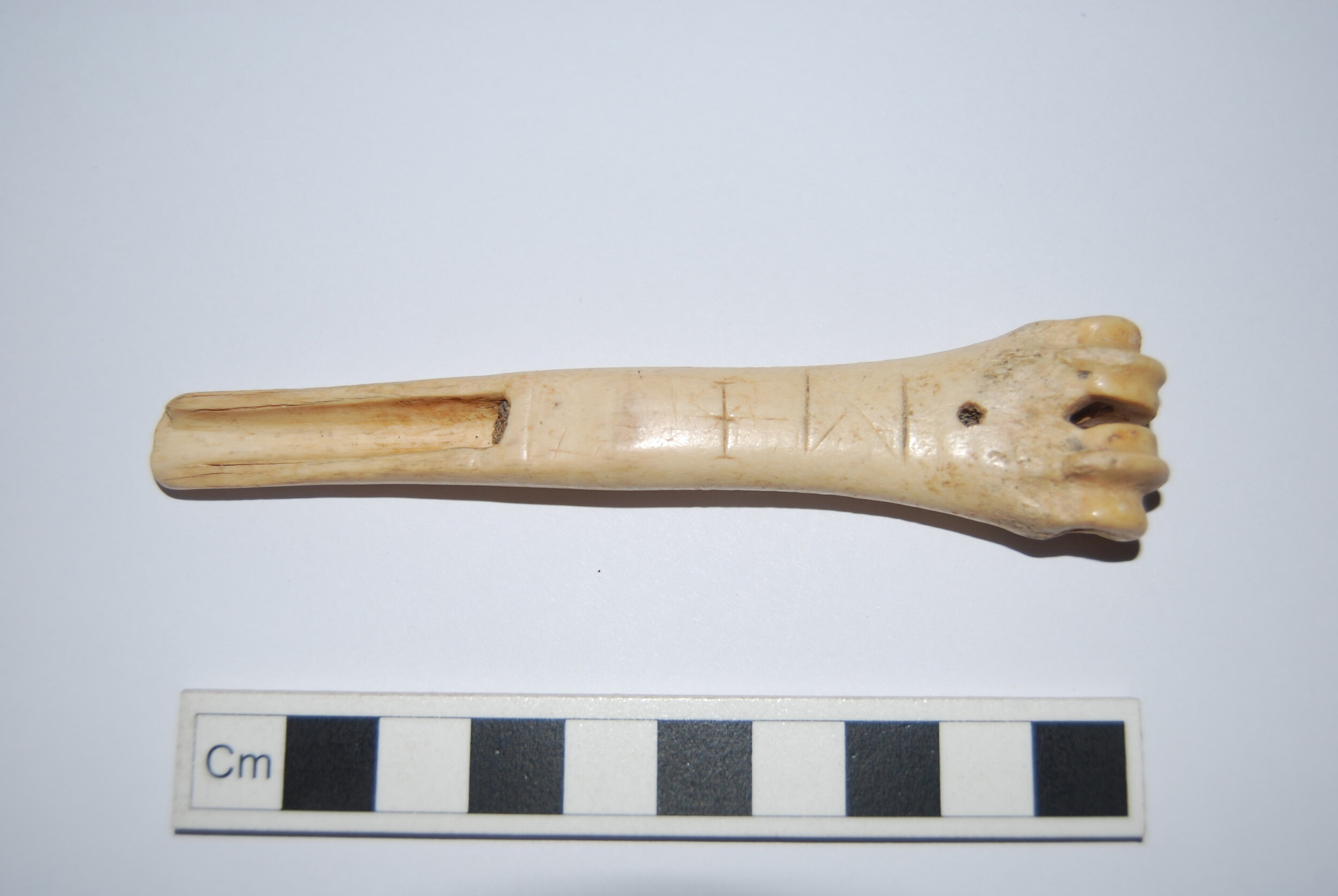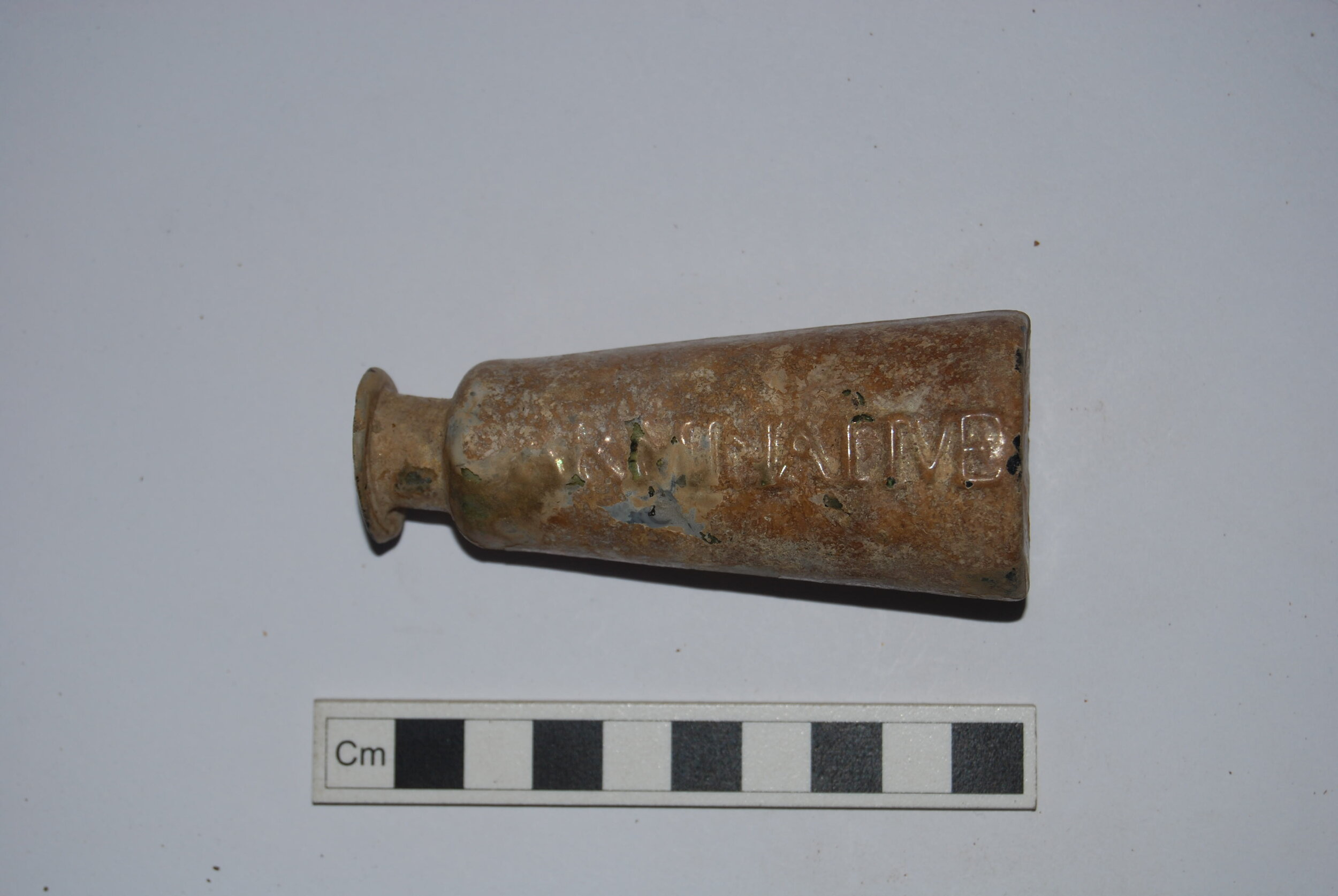Three Centuries of Life in Historic Bow, London
In the summer of 2014, on behalf of Bow Road LLP acting for Aitch Group, AOC carried out an excavation on land adjacent to Bow Road in the London Borough of Tower Hamlets prior to the building of new housing. The investigations revealed a well-dated sequence of post-medieval occupation spanning 300 years of Bow’s history.
The excavations revealed the foundations of an early 16th century Tudor building. Remains of the building’s cobbled yards and an outside bread oven (right) were also found. Whether this was responsible for the demise of an associated second timber-framed building which had burnt to the ground is unclear, but the remains contained many remarkable finds.
Of note were some of the earliest clay tobacco pipes manufactured in England, coins and jettons or reckoning counters. Household pottery recovered from two large rubbish pits to the rear of the house reflected the high status of the occupants and included pottery from Germany, France, Spain and Italy.
By the early 18th century the house underwent conversion for use as a workhouse. Again, the excavations revealed a large number of domestic finds including the remains of dishes, knives and a fine example of an apple corer fashioned from a sheep/goat bone (above, left).
Of great interest were the remains of numerous potion bottles suggesting that someone, maybe a ‘quack’ doctor, was practising nearby. Two complete vessels are marked ‘Dalby’s Carminative’ (right). This was a child’s sleeping draft containing opium produced in London by James Dalby from the late 1770s.



